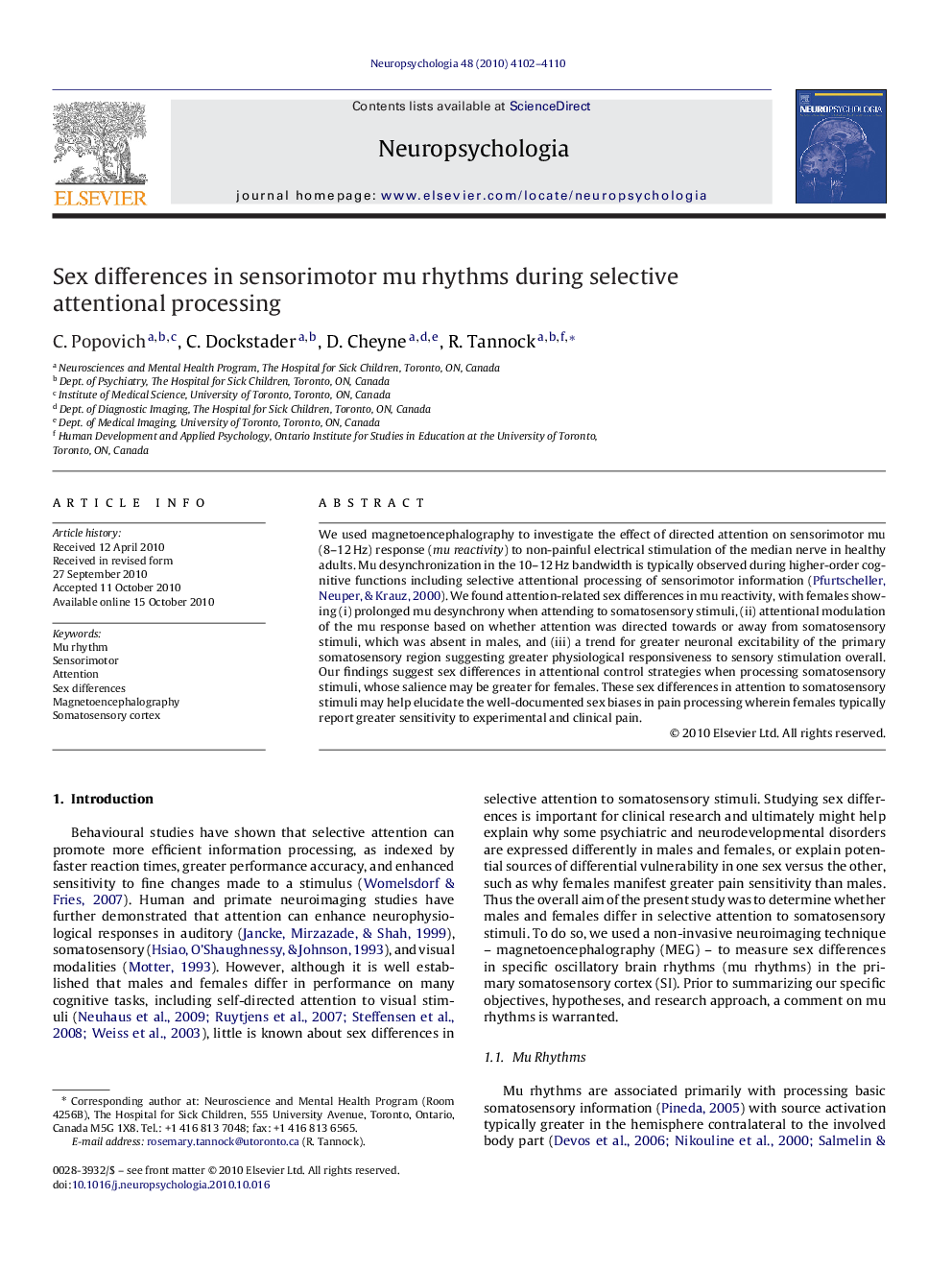| Article ID | Journal | Published Year | Pages | File Type |
|---|---|---|---|---|
| 10465964 | Neuropsychologia | 2010 | 9 Pages |
Abstract
We used magnetoencephalography to investigate the effect of directed attention on sensorimotor mu (8-12Â Hz) response (mu reactivity) to non-painful electrical stimulation of the median nerve in healthy adults. Mu desynchronization in the 10-12Â Hz bandwidth is typically observed during higher-order cognitive functions including selective attentional processing of sensorimotor information (Pfurtscheller, Neuper, & Krauz, 2000). We found attention-related sex differences in mu reactivity, with females showing (i) prolonged mu desynchrony when attending to somatosensory stimuli, (ii) attentional modulation of the mu response based on whether attention was directed towards or away from somatosensory stimuli, which was absent in males, and (iii) a trend for greater neuronal excitability of the primary somatosensory region suggesting greater physiological responsiveness to sensory stimulation overall. Our findings suggest sex differences in attentional control strategies when processing somatosensory stimuli, whose salience may be greater for females. These sex differences in attention to somatosensory stimuli may help elucidate the well-documented sex biases in pain processing wherein females typically report greater sensitivity to experimental and clinical pain.
Related Topics
Life Sciences
Neuroscience
Behavioral Neuroscience
Authors
C. Popovich, C. Dockstader, D. Cheyne, R. Tannock,
